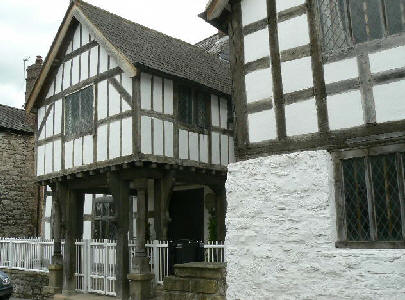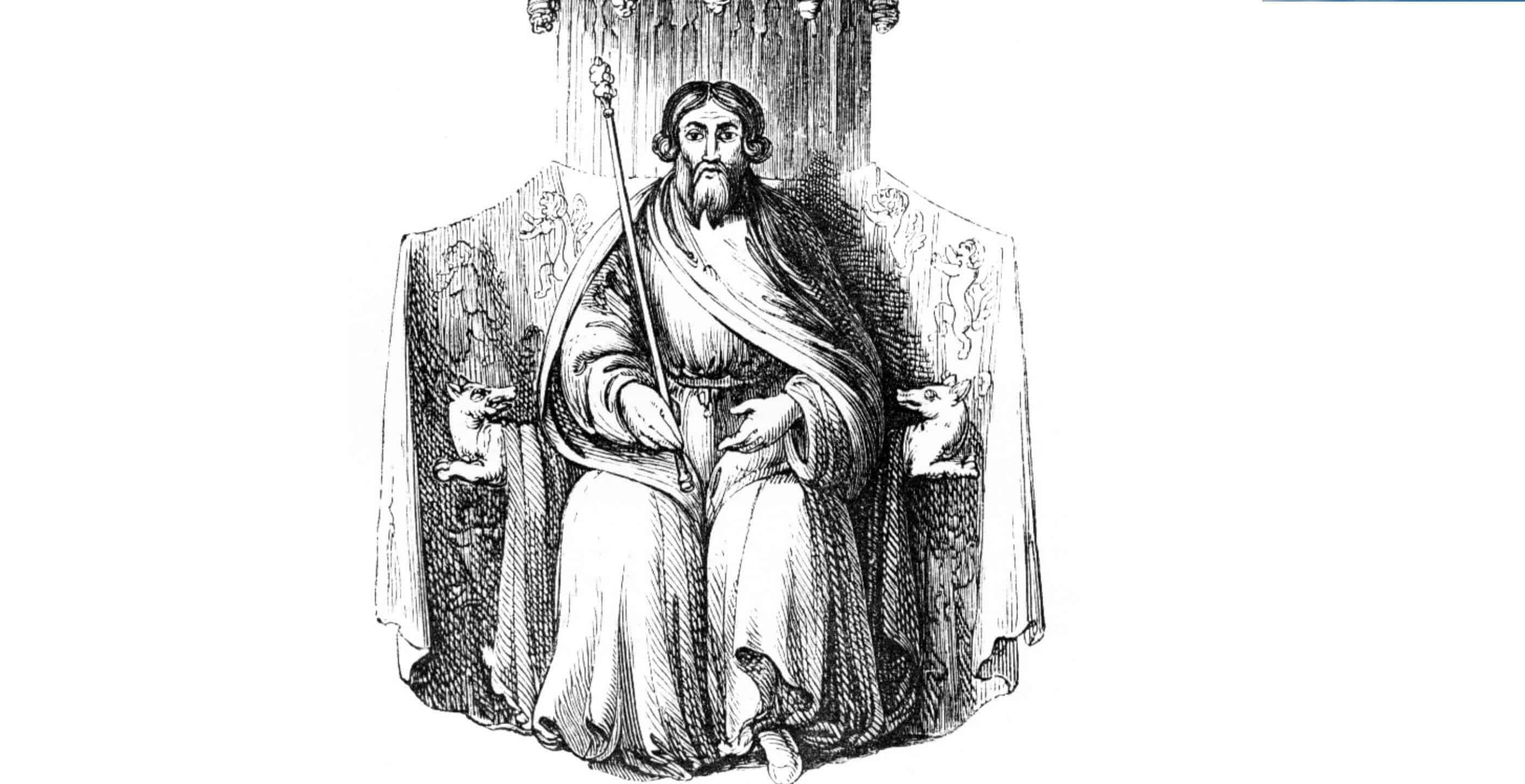Ruthin is a small historic market town in Denbighshire, North Wales, overlooking the River Clwyd in the beautiful Vale of Clwyd. Ruthin has a long, exciting and interesting history spanning over 700 years including scandal, battle and siege. Today it is the administrative centre of Denbighshire.
The name ‘Ruthin’ comes from the Welsh language words rhudd (red) and din (fort), and refers to the colour of the red sandstone which is found in the area, and from which the castle was constructed in 1277-1284. The original name of Ruthin was ‘Castell Coch yng Ngwern-fôr’ (red castle in the sea-swamps).
The older parts of the town, the castle and St Peter’s Square are located on top of the hill overlooking the Vale of Clwyd.

There is little documentary evidence of the town before the construction of Ruthin Castle. A wooden fort appears to have existed on the site until 1277 when King Edward I of England reconstructed it in local stone and granted it to Dafydd, brother of Prince Llewelyn ap Graffudd. It consisted of two wards and five round towers originally guarding the inner ward. All that now remains are three towers and the ruined double-towered gatehouse.
In 1282 the castle came under the control of The Marcher Lord, Reginald de Grey, reputedly the former Sheriff of Nottingham of the Robin Hood story, and his family owned the castle for the next 226 years. The third Baron de Grey’s dispute with Owain Glyndwr triggered the Welsh rebellion against King Henry IV in 1400, when Glyndwr burned Ruthin to the ground, leaving only the castle and a few other buildings standing.
During the English Civil War in 1646 the castle survived an eleven-week siege, after which it was demolished by order of Parliament. The castle was rebuilt in the 19th century as a country house and from 1826 until 1921 the castle was the home of the Cornwallis-West family, members of Victorian and Edwardian high society.
It was during this period that the castle played host to royalty – and intrigue and scandal. At just 16 years old, Lady Cornwallis-West, known as ‘Patsy’ to her friends, became involved with Edward, Prince of Wales, later Edward VII. Her mother had also reputedly been involved in a royal affair, this time with Prince Albert, consort of Queen Victoria, which resulted in her being banished from court! Patsy had three children during her marriage to George Cornwallis-West although there were rumours that at least one of her children, George, was the illegitimate child of the Prince of Wales.

Lady Cornwallis-West was famous for her high spirits, flirting and living life to the full. She is even said to have slid down the staircase at Ruthin Castle on a tea tray to amuse the Prince of Wales! Many members of high society were entertained at the castle including Lily Langtry (another mistress of the Prince of Wales, who was dubbed ‘Edward the Caresser’ thanks to his many affairs) and Lady Randolph Churchill, mother of Winston Churchill and later wife of Patsy’s son George Cornwallis-West. Several of the Prince of Wales’ affairs were conducted at the castle.
Ruthin Castle was the setting for the sex scandal that rocked British society during the First World War. Patsy embarked upon a passionate physical affair with Patrick Barrett, a wounded soldier who was billeted at the castle. Patsy asked senior members of the armed forces, including the Quartermaster-General, to promote her lover. However Barrett decided he wanted to end their relationship. Furious, Patsy then urged her friends in high places to return him to the Front although he was still medically unfit.
At this point Mrs Birch, the castle land agent’s wife, exposed Patsy’s role in the affair. This story of the flagrant misuse of influence by an aristocrat hit the press and led to a parliamentary enquiry and a public scandal which shocked the nation. The affair resulted in Lloyd George passing an Act of Parliament which led to Patsy herself being questioned by a military tribunal. The scandal led to her husband George Cornwallis-West retiring from society, to die a few months later in July 1917.
Ruthin Castle is now a luxury hotel.

Apart from the castle, the town has several interesting old buildings. The half-timbered Old Court House (above), built in 1401, is now a community and visitor hub open to the the public and features the remains of a gibbet last used in 1679.
Nantclwyd House (below) is the oldest known town house in Wales, with timbers dating back to 1435. This Grade I listed timber-framed house is said to be one of only two buildings to survive the burning of the town by Owain Glyndwr.

The Myddelton Arms has a remarkable roof with an unusual arrangement of windows known locally as the ‘eyes of Ruthin’. The Castle Hotel, formerly the White Lion, is an elegant Georgian building which once had a cock-pit at the rear.
Old County Gaol, in Clwyd Street, was built in 1775 as a model prison of that period to serve Denbighshire. The last execution was held in 1903 and the gaol was closed in 1916.
Ruthin today is a maze of little streets and attractive buildings and offers several pubs (in its heyday as a stop-over on the drovers routes in the 18th century it was said to have ‘ a pub for every week of the year’). There is a wide range of shops, restaurants and cafes. Each year the town hosts the Ruthin Festival, a week-long music festival, and the Ruthin Flower Show with carnival parade. Ruthin is also home to one of the largest cattle and sheep auction markets in Wales.
Superbly placed in the beautiful Vale of Clwyd, Ruthin makes an ideal base for exploring the stunning countryside of North Wales with its charming little villages and local landmarks such as Moel Famau and Moel Arthur. Don’t miss the Nant y Garth Pass (on the A525), where the road winds up steeply and the views are spectacular, and of course, the famous Pontcysyllte Aqueduct at Llangollen.
Getting here
Ruthin is situated 22 miles west of Chester, 38 miles from Liverpool and 55 miles from Manchester, please try our UK Travel Guide for further information.
Museums
View our interactive map of Museums in Britain for details of local galleries and museums.
Castles in Wales
Try our interactive map of Castles in Wales to browse our huge database.









